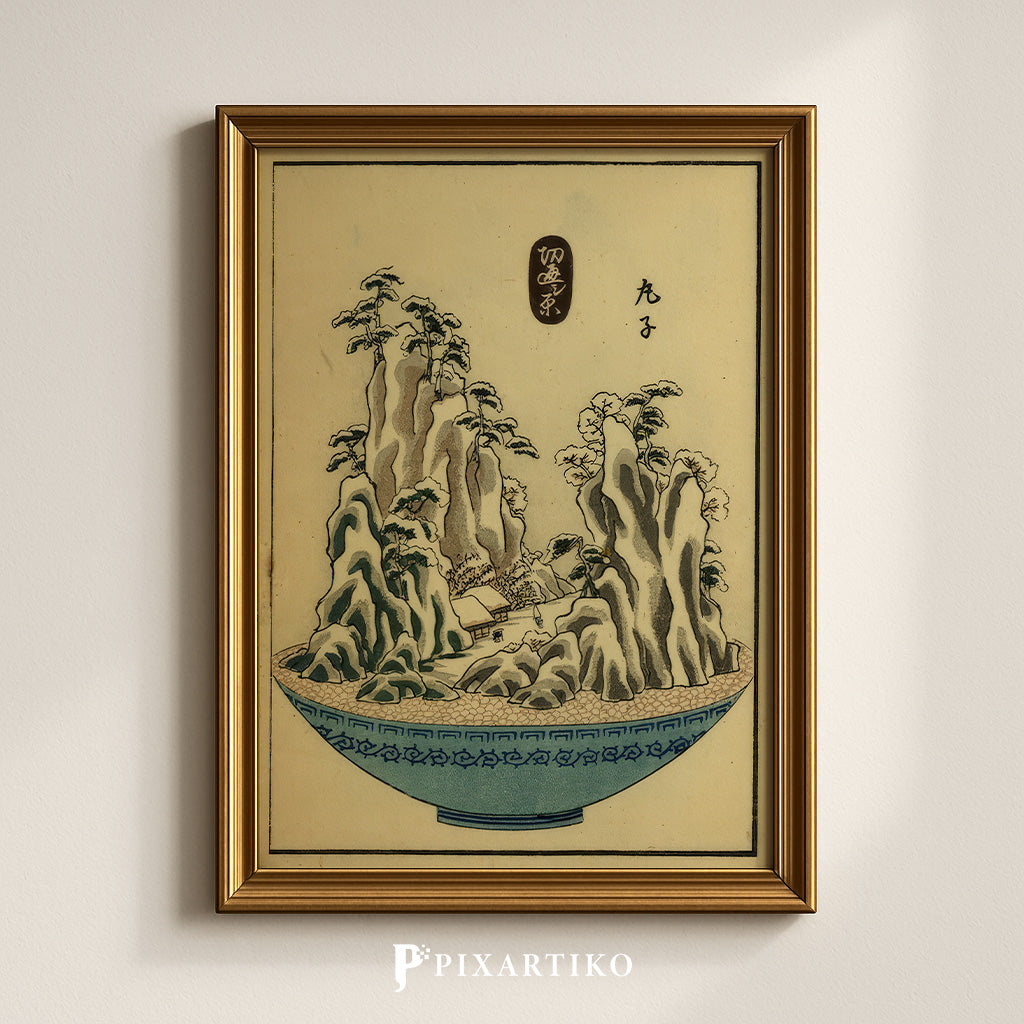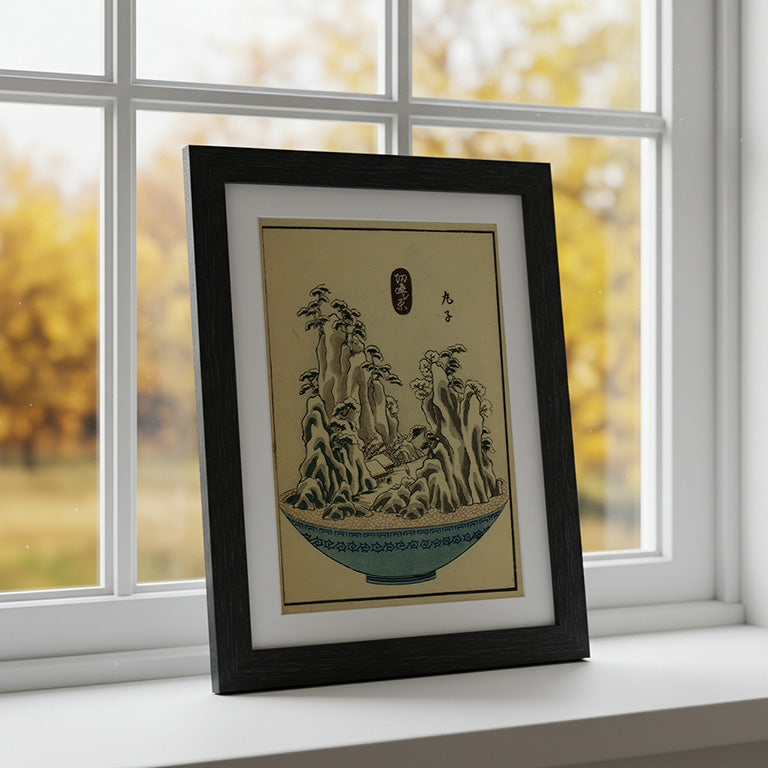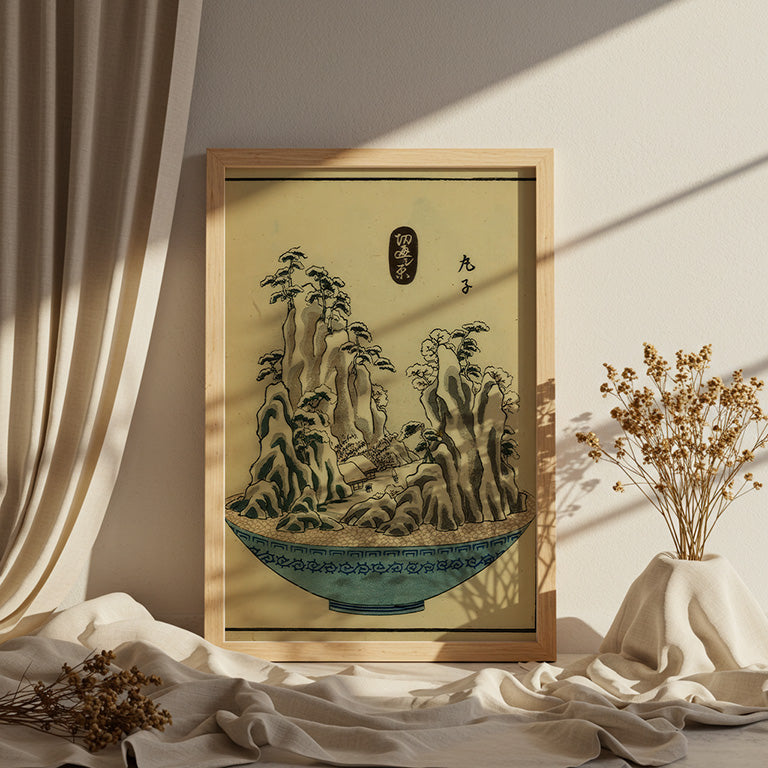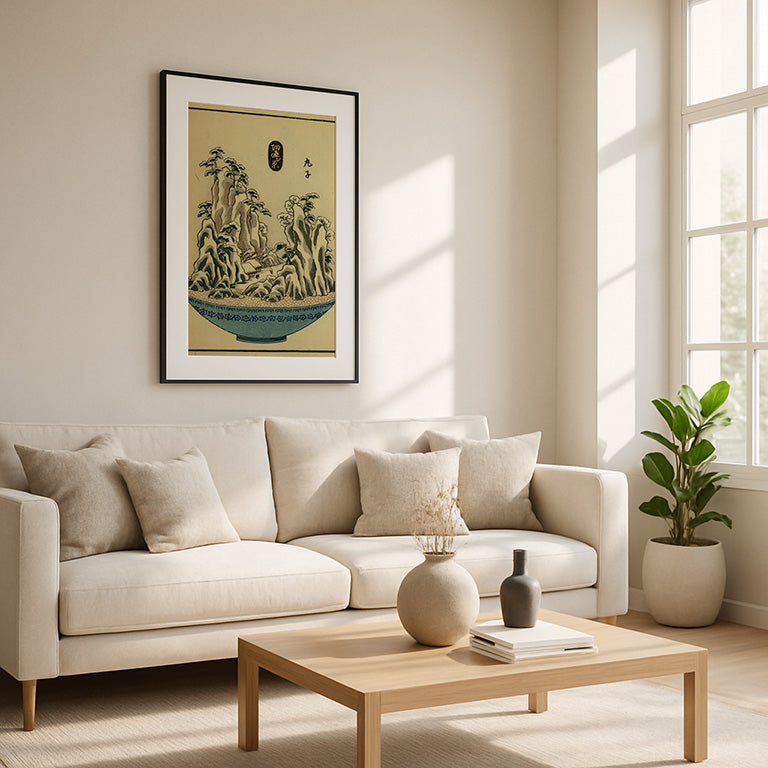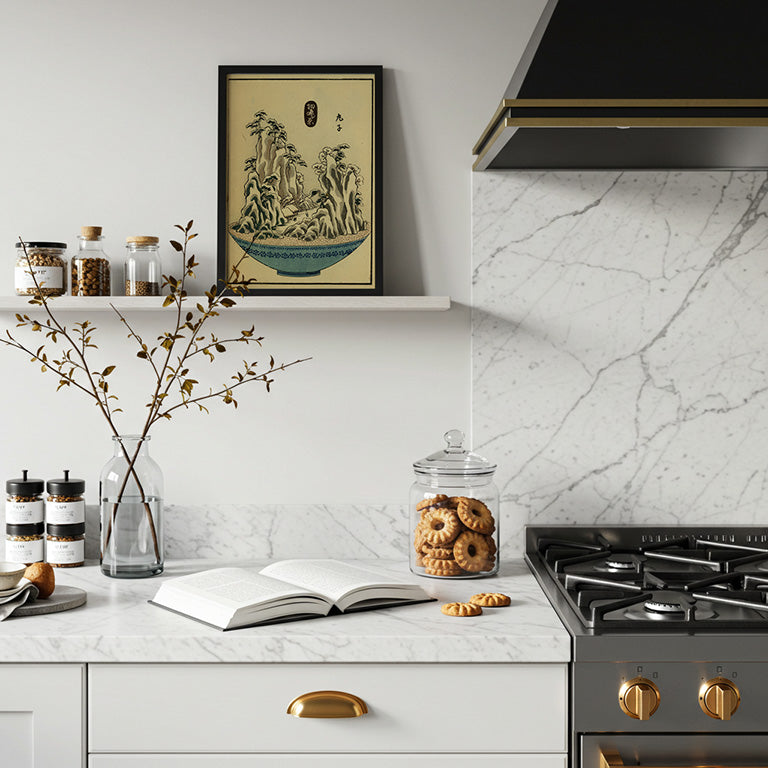"Mariko – Miniature Mountains" | Vintage Japanese Bonsai
"Mariko – Miniature Mountains" | Vintage Japanese Bonsai
No se pudo cargar la disponibilidad de retiro
Vintage Japanese Bonsai Landscape Print | 1848 Ukiyo-e Digital Download | Zen Wall Art for Home & Studio
Experience the serenity of Edo-period Japan with this printable art from the series 53 Stations of the Tōkaidō as Potted Landscapes (1848). This captivating scene represents Mariko, where towering rock formations and wind-swept pine trees emerge from a delicately decorated ceramic pot, embracing a tiny thatched-roof home. An exquisite example of Ukiyo-e landscape art, combining nature, imagination, and miniature aesthetics.
Perfect for lovers of Japanese bonsai prints, zen decor, and antique Asian wall art.
➤ Instant high-resolution digital download
➤ Ideal for gallery walls, meditation spaces, or Japanese-themed interiors
➤ A unique printable gift for art collectors, bonsai lovers, or fans of vintage ukiyo-e works

Pixartiko Collective – Usage License
Prints allowed for personal use and resale only as physical products in local shops. Use in other physical goods permitted if pixartiko.com is credited when possible.
Digital resale, sharing, or publishing is strictly forbidden.
Designs are not public domain and cannot be distributed online.
© pixartiko.com – All rights reserved.
Print Sizes
🖼 Included Print Sizes (No Cropping Needed)
This high resolution digital file is optimized for printing at the following standard sizes, no cropping or borders required. Just download, print, and frame:
| Inches | Centimeters | Suggested Use |
|---|---|---|
| 20 x 30 | 50.8 x 76.2 | Gallery posters, premium wall art |
| 16 x 24 | 40.6 x 61.0 | Exhibition prints, home decoration |
| 12 x 18 | 30.5 x 45.7 | Standard posters, frame-ready prints |
| 10 x 15 | 25.4 x 38.1 | Photo enlargements, studio portraits |
| 8 x 12 | 20.3 x 30.5 | Portfolio prints, photo books |
| 6 x 9 | 15.2 x 22.9 | Small art prints, promotional material |
🖨️ All sizes are print-ready at 300 DPI, maintaining the original image ratio. No cropping or borders required.
📂 Your download includes:
- 1 high resolution JPEG file (Aspect Ratio: 2:3 - Portrait).
- Artistic Declaration Certificate in PDF.
- Free gift: The Ages of Painting guide — a visual journey through the history of painting.
🎨 Need a different size or format?
No problem! Just send me a message and I’ll be happy to adapt it for you.
🎧 Art Review
“Mariko”, from the series 53 Stations of the Tōkaidō as Potted Landscapes
Utagawa Yoshishige, ca. 1848
In Mariko, Utagawa Yoshishige distills the tranquil essence of one of the Tōkaidō’s storied post towns into a lyrical, self-contained landscape. Part of the extraordinary mid-19th-century series 53 Stations of the Tōkaidō as Potted Landscapes, this image is a masterful example of bonkei—tray landscapes that translate topography into meditative sculptural form.
Here, towering crags rise dramatically from a bed of pale stones, framing a rustic thatched-roof dwelling nestled into their midst. The composition conveys the monumental presence of nature on a miniature stage, where mountains lean toward each other like ancient sentinels, and human life clings humbly to their base. Yoshishige, working from physical models crafted by Kimura Tōsen in 1847, translates those three-dimensional creations into images of poetic compression.
The color palette is muted yet evocative: soft greys and greens dominate, punctuated by the deep blue of the ceramic bowl that holds the entire microcosm. This vessel, adorned with elegant wave motifs, acts not only as a frame but as a visual metaphor, suggesting that the natural world—even in its grandeur—can be shaped, contained, and contemplated.
What makes Mariko remarkable is its emotional resonance. There is no theatricality or spectacle here, only a quiet invitation to reflection. The scene suggests a timeless moment, a space where solitude is not isolation but presence. In its scale and serenity, the piece echoes the philosophy behind bonsai and other Japanese miniature arts: to see the vastness of the universe in a single, perfectly composed detail.
With Mariko, Yoshishige captures not only a place on the Tōkaidō road but a spiritual geography—one where nature and memory, structure and emptiness, are all held together in elegant, silent balance.

Share
